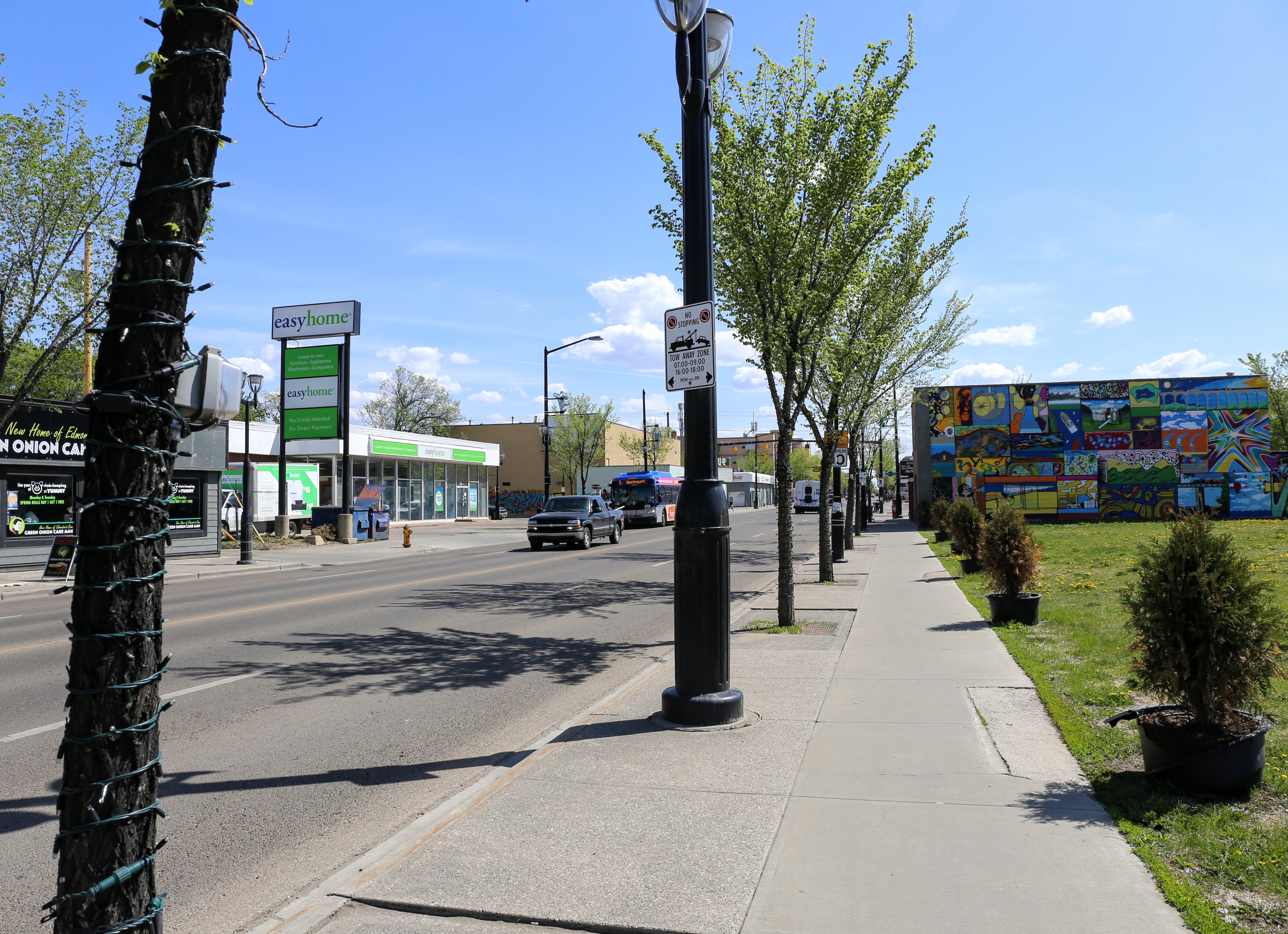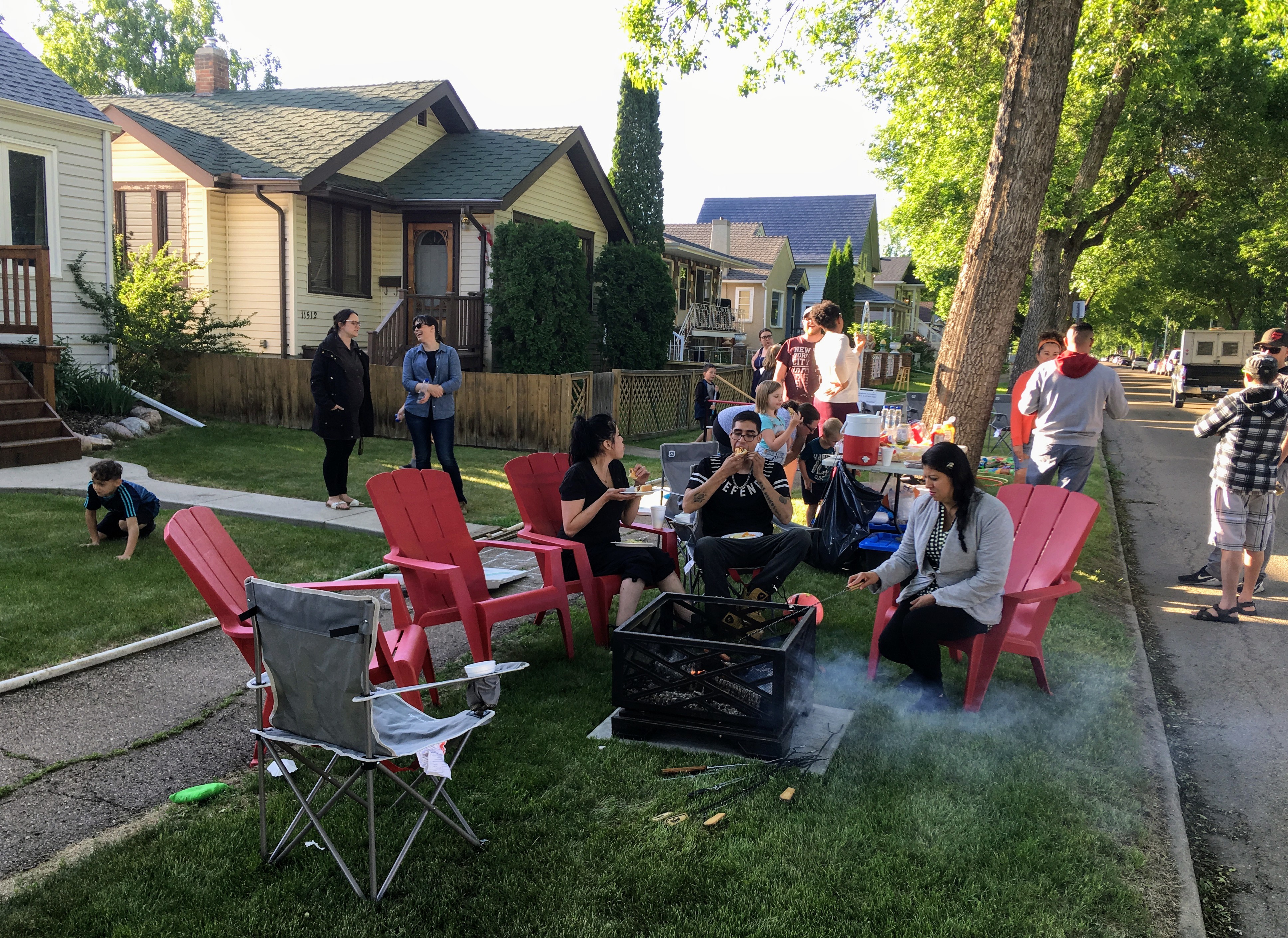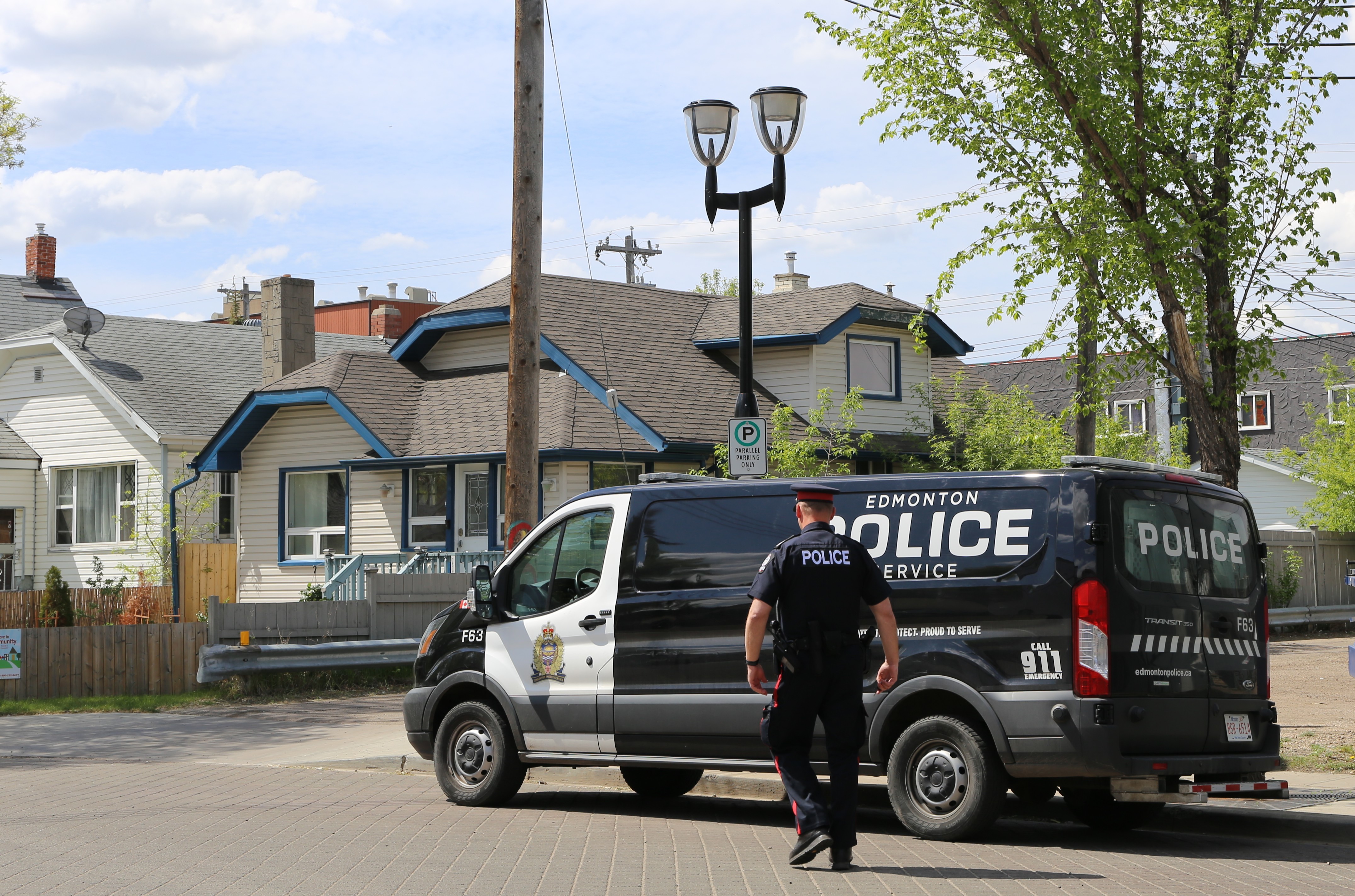On a rainy morning in May, good things are happening inside the Carrot Coffeehouse on 118th Avenue.
A community hub in the truest sense, the place is bustling.
Alberta Avenue residents gather in the art-filled space, enjoying conversation and the folksy vibe. The door opens and two police officers walk in. They greet people by name and share some laughs before heading back to their patrols.
Unthinkable just a decade ago, residents say scenes like this are the new normal for Alberta Avenue.
The City of Edmonton initiated a revitalization project in 2005, after the community asked for funding to improve the lighting in the area, in an effort to deal with safety and crime issues.
As rain hits the coffeehouse windows, Christy Morin reflects on how her neighbourhood has changed since she moved in 25 years ago.

The area used to be a frightening place, she told CBC in an interview.
“Those first 10 years were absolutely horrible in many ways, when crime and drugs take over a neighbourhood and no one is stopping it,” Morin said.
“It was scary, and when fear takes over there isn't a place for beauty.”
Since then, Alberta Avenue has slowly reinvented itself into an arts district.
“Now you can walk down the avenue, and you see smiles when people are walking by,” said Morin.
“People are from all different walks of life. The diversity in the neighbourhood is very rich.”
Morin is executive director of Arts on the Ave, a registered charity formed by a collective of artists in the early days of the revitalization effort.
“The artists came strongly to the forefront as leaders and as visionaries, and the city recognized that and said to Arts on the Ave ‘We're behind you, what do you need?’”
But the area is still vulnerable, Morin said.
“We're still at that really fragile point.”

City partnership
Since 2005, the city has invested close to $40 million in capital funding to transform the 118th Avenue streetscape, between NAIT and Northlands.
It included improving lighting on the street, widening sidewalks, and adding benches and trees.
The neighbourhood also receives about $180,000 each year for programming.
The community has to match that funding to access it, through volunteer hours or in-kind donations, said senior planner Deanna Patsula.
“The revitalization program is really a partnership between city staff and the community members,” Patsula said.
“The communities are expected to take the lead and to implement community projects with support from the city.”
City council approved funding for two more years in April.
The Edmonton Police Service is also part of the effort, with a focus on building ties with the community.
Police presence has been increased. Two teams, each comprised of a sergeant and six constables, are assigned to the Alberta Avenue beat.
“I've seen a reduction in the calls that we get here,” said Sgt. Andrew Weaver.
“The police cannot create a safe environment without the community. We support them from beneath, the community looks after itself.”

‘Sense of pride’
The revitalization effort has also influenced the way residents interact, said Lenn Wheatley, neighbourhood connector with the Alberta Avenue Community League.
The league uses a portion of the funding allocated from the city to promote community engagement.
“Many small sparks took place within the neighbourhood, many clubs started to appear,” said Wheatley.
Block parties that unite residents through food, music and play have been a popular way to foster connections, he said.

“We have seen a physical difference,” Wheatley said. “We have more people that are out on the street walking in the evenings.”
Arts on the Ave organizes two major festivals each year, Deep Freeze and Kaleido, which bring thousands of people to Alberta Avenue.
The festivities showcase the vibrant arts scene and diverse cultures in the area, said Morin, and demonstrate how much the area has changed.
“There's this whole ownership piece and the sense of pride that's coming back.”

Building on momentum
The improvements to Alberta Avenue are significant, Morin said, but the neighbourhood needs financial help from the city to maintain them.
“We still need leadership, and we still need the city to be our strong partner in what we're doing.”
Arts on the Ave has identified areas that still need work before the revitalization funding winds down.
The organization wants to encourage more businesses to set up shop in the neighbourhood.
Safety also needs to be improved, and more supports are required for vulnerable populations, said Morin.
“Lots of single moms need support, a lot of newcomers need support with language barriers,” she said.
Building on the trust between community members and police is a long-term strategy, said Sargeant Weaver.

“These things take time, and there is a definite payoff for it,” he said.
“Our primary goal is to move toward working with more partner agencies, and trying to get the people that need the help the help they need.”
The funding allocated by the city for programming is much less than the cost of letting Alberta Avenue fall into criminality, said Morin.
“It’s nothing compared to seeing a neighbourhood become a derelict, down-and-out community.”
